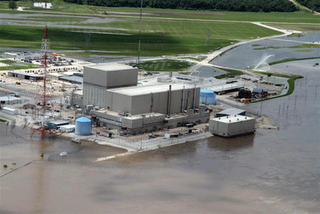13 March 2011
Nuclear power plant officials admit that reactor 1 at Fukushima plant 1 exploded due to hydrogen gas build up. Many western observers had already made this statement, but Japanese officials downplayed it for almost a day. This is becoming standard of Japanese officials, they have been downplaying the severity of the situation from day one. Nuclear officials say their nuclear plants are designed to withstand 7.9 quakes. Japan’s government has uprated the main quake to 9 on the international scale. I think it will be higher.
Miyagi prefecture is reporting that at least 10,000 people are dead. Towns wiped out along with their population. Miyagi prefecture has 13 cities, plus towns & villages, with a total official population of about 2 million.
Some local governments have literally been wiped out and the national government has taken direct control.
Major Japanese companies, like Toyota, Honda, Sony, etc, are shutting down operations in Japan due to a total collapse of the infrastructure of Japan. Japanese reporters have said that rescue helicopters have not been able to land in the hardest hit areas because the ground is too torn up. One city looks like it has been hit with a nuclear bomb, only the tallest buildings are standing. Landslides have hit areas further inland. The infrastructure includes roads, bridges, rail lines, water lines, power lines, etc. This is adding to the growing nuclear disaster.
Officials with nuclear power plants say they have no back up power from non-nuclear plants because those plants have been shut down by the quake/flood. The back up generators at the nuclear plants are not working, or will not run properly, damaged by the quake/flood. Power is needed to run the massive cooling systems on the nuclear reactors. Fukushima nuclear plants 1 and 2 are in trouble. Reactor 1, at plant 1, has exploded and experience partial melt down of reactor rods. Other reactors at both plants are overheating. As I’m writing this word has come that reactor 3 could explode. Officials say hydrogen gas is building in the reactors. They are trying to vent it to prevent explosion. They are dumping sea water on the reactors. Using sea water is a last ditch act, which is a sign that they can not do anything else to prevent nuclear catastrophe. 62,000 people have been evacuated from around the Fukushima plants. Officials are now saying they want to expand the evacuation to include another 80,000 people. There are reports that another nuclear plant, in Onagawa, is in trouble.
JAPAN MODERN DAY ATLANTIS ROUND 2: People of Atlantis had become extremely arrogant because of their technological advances.

